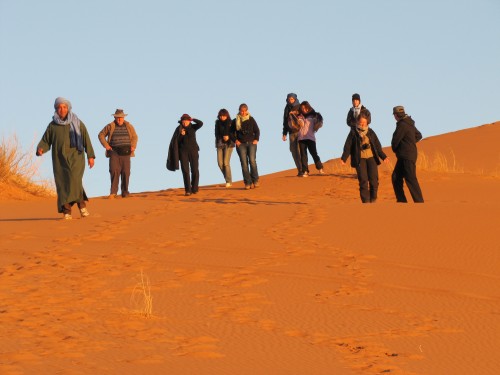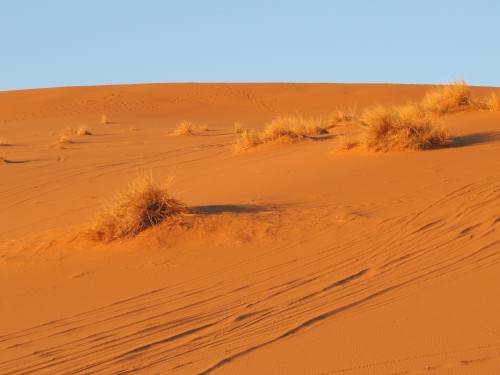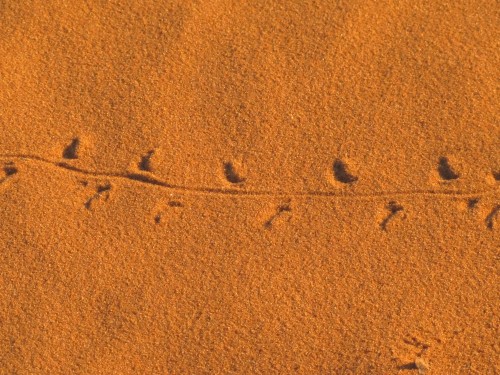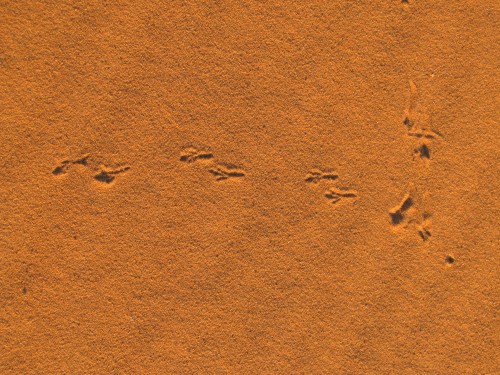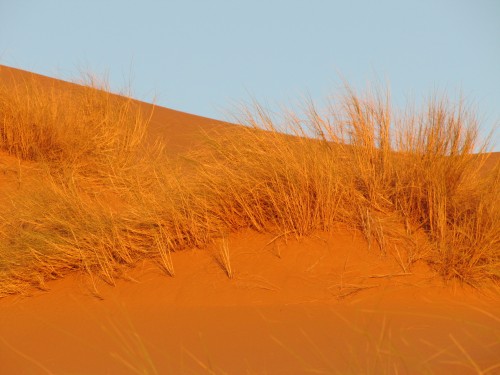Morocco is a land of contrasts
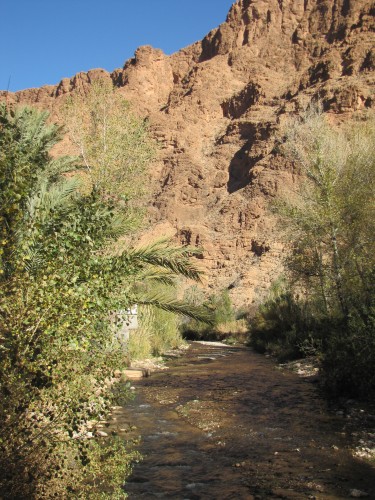
Gorge in eastern Morocco
It was fascinating visiting Morocco. I really had little idea of what the countryside would look like. Every day seemed different, every turn of the road we took opened up new vistas and interesting glimpses of life in this magical country.
After visiting the deep colours of the Sahara – see my previous posts – we travelled in a south-easterly direction. I am not entirely certain as to where today’s photos were taken, but our tour pamphlet indicates this was in the Todra Gorge and the Dandes Valley. If any of my readers can enlighten me further, please leave a comment or two, thanks.
The photo above shows a beautiful stream flowing through a deep gorge. The surrounding country is harsh and dry, stony and wind-swept. This little oasis was a pleasant change from the stark surrounding countryside. The photo below shows the entrance to the place where we had lunch, another quiet, serene escape from the bustle of city life in the medinas further west.
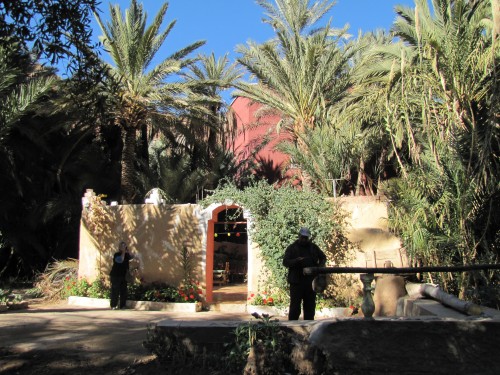
A serene retreat for lunch
As we travelled along we saw sudden drops over a steep escarpment into the valleys below. The people living in this valley were in verdant farming country, in many places only a short walk to the surrounding desert-like country all around. What a difference reliable water makes to an environment. We actually saw much evidence in many parts of the country of the efficient use of water. Perhaps many farmers here in Australia could learn from the Moroccans in the best use of a scarce resource like water. Just a thought.
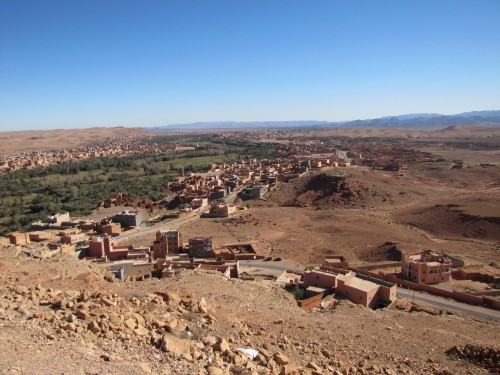
Morocco – Dandes Valley?
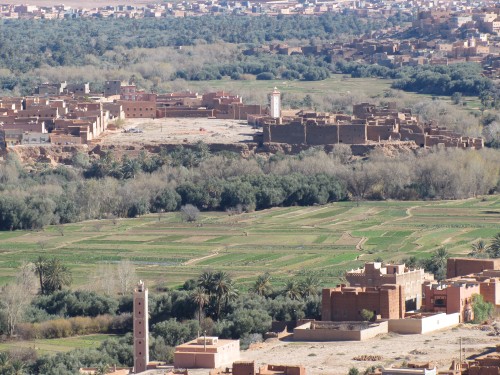
Morocco – Dandes Valley?
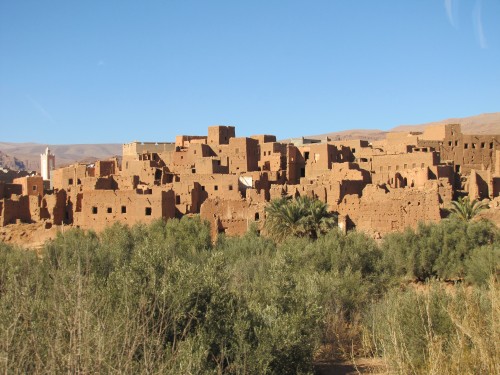
Morocco – Dandes Valley?
Now that’s a different way to travel
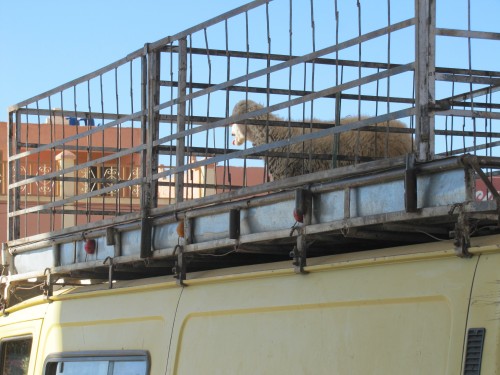
An interesting way to travel
Over the years, I have seen some unusual sights while travelling.
For example, only earlier this week here in South Australia we were driving from Peterborough in the mid-north back home in Murray Bridge, near Adelaide. We passed two people travelling north on in-line skates (roller blades) using two skiing poles to propel them and their small trailers.
Bizarre.
And very hard work on a hot, humid day.
On our tour of Morocco, I took the photo above. We were stopped at a roadside restaurant for morning tea. Other vehicles had also stopped there. A single sheep was having a grand tour with an excellent view of the countryside. I love the trouble that the owner of the van had gone to in order to keep the animals he needed to transport in safety. It was possible a quite normal thing to do in Morocco, though I didn’t see any more examples of this method. In Australia, we are more used to seeing animals transported in large trucks, trailers of many sizes, or on the backs of utes (utility vehicles).
Less common would be transporting animals inside a vehicle (with the exception of pet dogs, cats and the like), though I have heard of people carrying animals inside the boot (trunk) of a car and even inside a van. I have even seen sheep being transported on a quad bike (4 wheel motorbike) or over the lap of a person riding a two-wheel motorbike which is relatively common on farms here in Australia. But I have never heard of or seen animals carried on TOP of the cabin of a car or van, as in this photo.
I actually think that it is quite innovative.
Some birds of the Sahara in Morocco
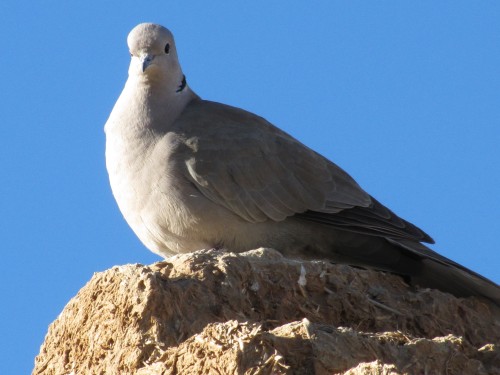
Eurasian Collared Dove at Merzouga in Morocco
Over recent weeks, I have been writing about our experiences while on a tour of Morocco. A few days ago I wrote about our camel ride into the Sahara and our overnight stay in a tent in the desert. On our return to a hotel on the edge of the desert, we had a late breakfast overlooking the desert. After the meal, we boarded our tour bus and moved on to the next destination.
While having breakfast I was able to get some good photos of some of the local birds, as shown in today’s post. The first one above is of the Eurasian Collared Dove, a relatively common bird in this part of the world. It is found throughout much of Europe, Asia and northern Africa, including Morocco. It has been introduced into North America. I actually photographed one in our garden in South Australia a few years ago – click here to see the photos of a sub-species, the Barbary Dove.
The next photo shows a lovely portrait of a Southern Grey Shrike. This species is found in many parts of northern Africa, the Pakistan-Indian region and in Spain. This was the first time I had seen this species so it is a “lifer” for my list.
The third species, as shown below, was a White-crowned Black Wheatear, another “lifer” bird species for me. It was a lovely way to end our visit to the Sahara, and one of the highlights of a wonderful tour of Morocco.
While on the camel ride into the desert I did see several other bird species but I was unable to identify them. It was very difficult to take photos of them from the constantly moving back of the camel I was riding. Near out camp in the desert, I also saw a small flock of House Sparrows.
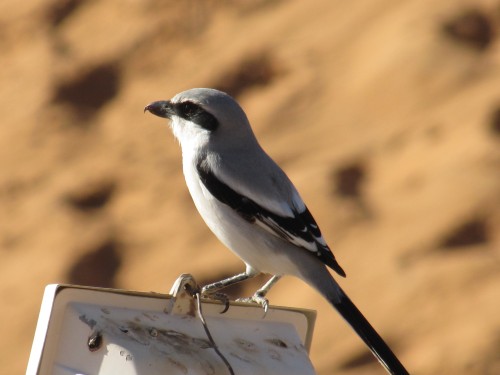
Southern Grey Shrike at Merzouga in Morocco
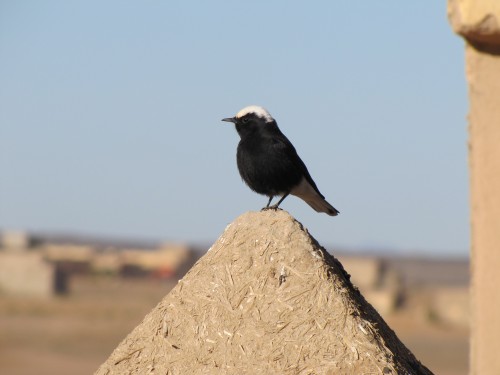
White-crowned Black Wheatear, Merzouga, Morocco
Breakfast in the Sahara Desert
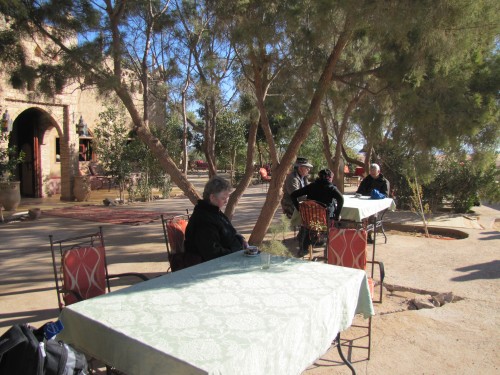
Breakfast in the Sahara
Over recent post on this site, I have shared photos taken on our visit to Morocco several years ago now. As an aside, I am enjoying looking at the photos taken on that trip and selecting appropriate shots to share here. There is nothing like a few trips down memory lane.
In my most recent posts, I have written about our camel ride into the Sahara Desert and our stay overnight in a Berber tent right out in the desert. We returned, again riding camels, to the hotel shown in today’s photos in time for a late breakfast. This just happened to be on Christmas Day; it is a celebration of this important day that we will never forget. It was so different, for we normally would attend church, followed by a family get-together for lunch and/or dinner.
Just like all of our meals in Morocco, this was delicious. They certainly know how to put on a good feast for tourists in the places we stayed. Along the way, we also had some great meals in restaurants and other food outlets, especially for lunch. While I occasionally ordered the types of food we enjoy here in Australia, I was also adventurous and ordered more Moroccan style food. Tasting the local foods is one of the delights of travelling overseas, and visiting a totally different culture is inspiring. Even though I am not normally very adventurous when eating out here in Australia, I was determined to be different when touring. I really enjoyed this aspect of our time in Morocco – and then in Spain, but more of that in later posts.

Breakfast in the Sahara
Tracks in the desert
During our brief visit to the Sahara Desert on a tour of Morocco I took a series of photos of the desert, the plants of the desert and some of the tracks seen in the sand. I guess I expected the sand dunes to be pristine, perhaps a little windswept and certainly not covered in all kinds of tracks. Sure – a few footprints like those in the photo of our tour group shown above.
In some parts of the desert through which we travelled on our camel rides into and out of the Sahara I saw many wheel tracks as well. Some of the tracks were obviously those of people walking, larger ones were certainly camel tracks and yet others were motor bike and four wheel drive vehicles.
But what about those shown immediately below? Are they bicycle tracks? I didn’t see anyone riding a bike, but I guess that with the right tyres and plenty of energy it might be possible.
I have no doubt about the tracks shown in the following photo. I am almost certain that this photo shows the track of a small reptile, though it was obviously out and about before I had climbed the sand dune near our camp site. I have no idea what kind of reptile made this track. It may have been a small lizard or a skink or gecko. If my readers can identify this, please let me know in the comments.
Just as puzzling are the tracks shown in the photo below. Are they from a bird? They appear to be of a hopping bird but I am not totally convinced. The only birds I saw on our brief visit to this part of the desert were some House Sparrows near our camp site, and some blue-grey finch-like birds on the camel ride into the desert. Sadly, the motion of the camel I was riding prevented me getting an identifiable photo.
